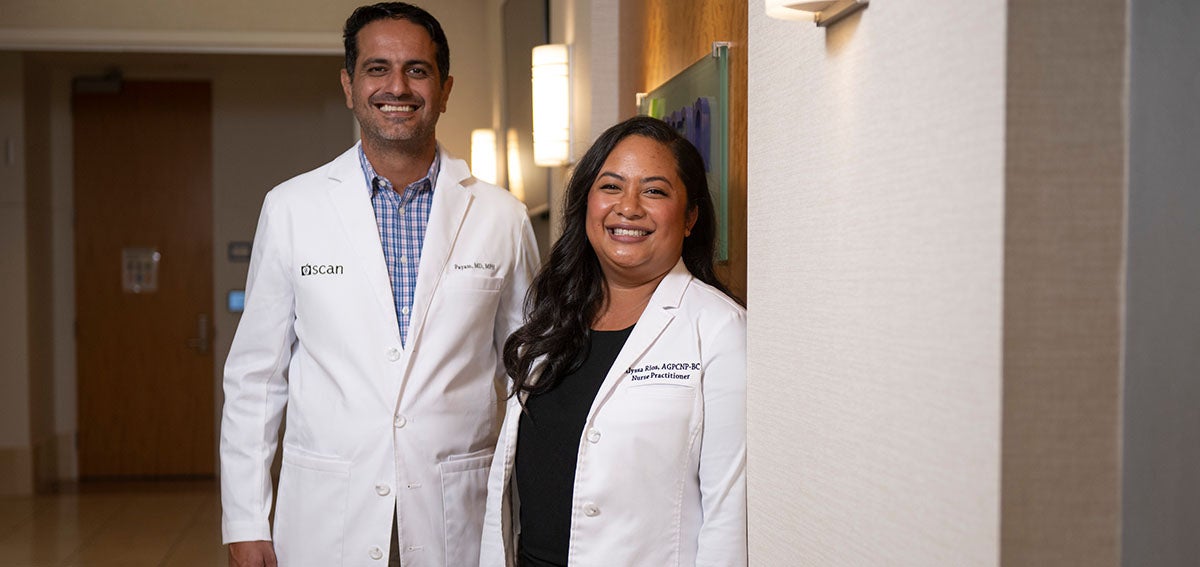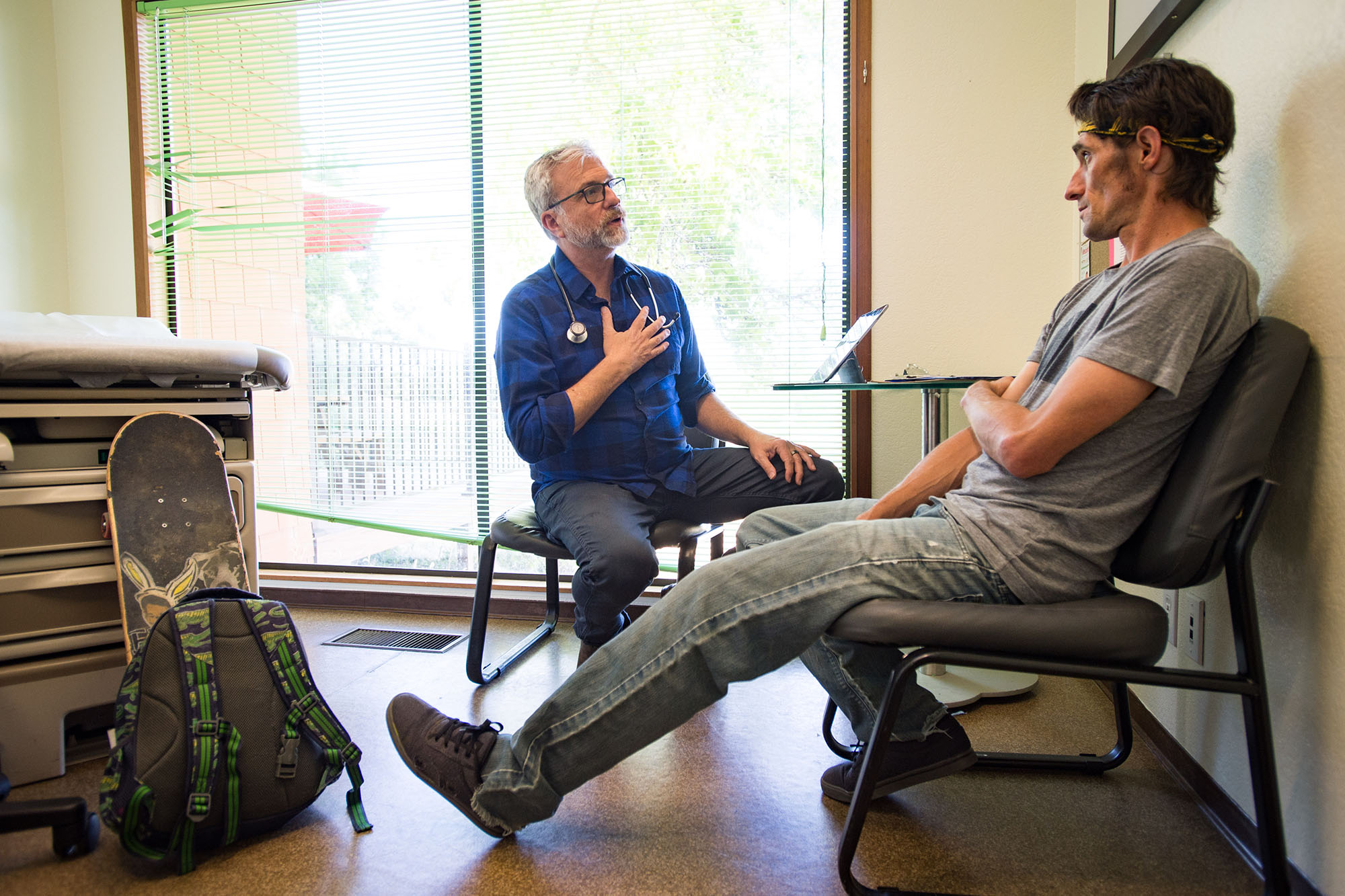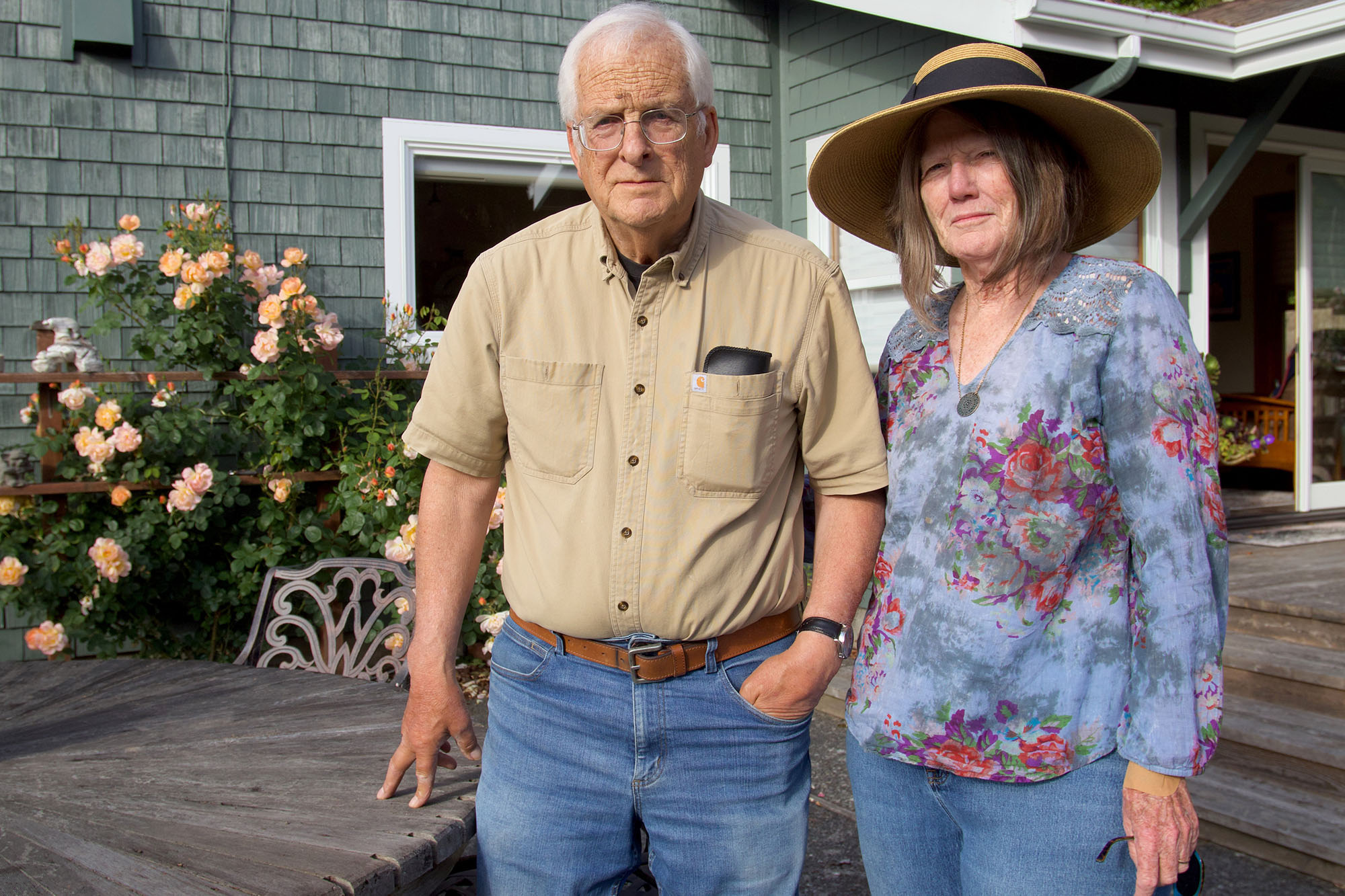
Since completing his medical residency in internal medicine, Payam Parvinchiha, MD, has mostly provided care to California seniors and served as medical director for various hospices. These experiences, he said, underscored the value of a team-based care model that features intense collaboration among doctors, nurse practitioners (NPs), pharmacists, and case managers. Parvinchiha led a team of 40 NPs when he worked at CareMore, a company that focuses on prevention and highly coordinated chronic disease care while addressing patients’ medical, social, and personal health needs.
The physician — a CHCF Health Care Leadership Program alumnus — now supervises 15 to 20 nurse practitioners at SCAN Health Plan’s clinic in Long Beach, California. At SCAN, he treats seniors in assisted living communities, typically providing primary and palliative care to those who are at least 85 years old and coping with multiple chronic conditions, cognitive decline, and mobility issues. Many are nearing the end of their lives, and Parvinchiha says his goal is to maintain their health while being “a guardian and steward of ensuring they have a good death.”
I recently spoke to Parvinchiha over Zoom about the potential for nurse practitioners to improve primary care services in California, where the gap between patients’ needs and the supply of providers is widening. This interview has been edited and condensed for clarity.
Q: How do you work with nurse practitioners, and how do you view their clinical skills?
A: Early in my career in private practice, I had a very traditional view of nurse practitioners as care extenders or mid-level providers. I saw them as clinicians who could manage lower-level issues like coughs or colds, while anything more complex would involve us physicians. It wasn’t until I got to CareMore that I became deeply passionate about the important role nurse practitioners play in managing patients. I became a huge advocate of helping physicians understand that they shouldn’t look at NPs as a competitive entity. Physicians and nurse practitioners make up two distinct professions that can deliver so much more value if they can work side by side.
Nurses at the bedside have deep relationships with patients. They can understand patterns that show the decline of a patient better than other clinicians. Doctors can interpret laboratory tests or CT scans and interpret data well, because that’s what we were trained to do. But we didn’t spend as much time at the bedside of an 85-year-old patient with advanced dementia to see the difference between him or her in normal state and then in different stages of the effects of a brewing health care problem.
Q: Can you recall a patient who especially benefited from the high-touch care of a nurse practitioner?
A: When I first started in this work, there was a moment when we had some staffing issues. I offered to perform the duties of a nurse practitioner for two months, and that included caring for one lovely patient who was 104 years old. When the nurse practitioner was leaving, she told me, “You need to give her a hug every time you see her.” But I resisted that. I would visit this patient and shake her hand and talk to her, but I wouldn’t hug her. This went on for about a month, and she filed a Medicare grievance against me, literally complaining that I was not hugging her!
We had a good laugh about it, and the next time I bent down and gave her a hug as instructed. I immediately noticed that the commode next to her bed had obvious signs of a urinary tract infection, which can cause life-threatening complications in vulnerable patients. When I ordered a test, she was diagnosed with a very significant infection that needed to be treated. Any geriatrician will tell you that the key to geriatrics care is early recognition of disease. As a physician, hugging my patients isn’t necessarily an essential part of my clinical encounter, but that type of contact is much more natural among nurse practitioners and has genuine clinical value.
Q: As a physician, what is your view of nurse practitioners practicing without the supervision of a physician?
A: The reality is that we do not have enough primary care doctors in this country and in this state, and we know we will not have enough primary care providers in the future. We know that we are going to have a worsening shortage not just in rural settings, but in urban settings. Given the growing population of older adults, this is of great concern.
We need to expand our primary care clinical capacity to manage these patients. The argument that nurse practitioners need direct oversight by a clinician implies that nurse practitioners aren’t practicing safely or don’t have the capability to provide care. That just isn’t the case. It’s not about practicing autonomously as much as it is practicing within the scope of their capabilities, which is why team-based models that give them access to collaborating clinicians is essential. They practice within the scope of their training, similar to a physician. They should be able to do that without unnecessary restraint. NPs and doctors have unique scopes of practice that are the basis for how they are licensed to practice. The idea isn’t that they should replace each other but rather that they can act as complementary providers who are working together to provide enhanced care for patients. If this is done well, we can safely increase access to care.
Q: How have nurse practitioners who have met existing independent practice requirements expanded access to care in your organization?
A: Our ability to effectively serve this extremely frail population is absolutely dependent on nurse practitioners. There is never going to be a financially sustainable model where physicians visit these patients as regularly as nurse practitioners. But beyond the financial considerations, frequent physician encounters don’t deliver the same value as an NP. Nurse practitioners love to see patients frequently. They love to build relationships. The average doctor would say, “Why should I do that? I can’t learn anything from seeing this patient weekly. That’s crazy. I’ll see him every other week. I’ll see him every month.” As doctors, we’re trained for episodic interval assessment, not continuous engagement. It’s not that one is better than the other, it’s two different models that need to work alongside one another, not in place of each other.
Q: What considerations come into play in determining the transition-to-practice period, which defines how much experience and physician mentorship an NP must achieve before being allowed to practice independently?
A: I think we need to look at the idea of expanding NP residency programs to provide NPs with consistent and supportive training around the state. Ideally, it would be supported by the state, funded, and executed in a positive way. I hope every organization that hires and trains nurse practitioners develops a robust training program so that when an NP goes off to practice on his or her own, everyone can feel confident about the level of clinical practice experience.
It is essential that anyone practicing in a clinical environment should receive solid hands-on training. But setting up unnecessary barriers to independent practice is not helpful. We need to find the right balance so nurse practitioners can do their part to expand access to health care services in the many places in California where it is desperately needed.
The problem of access to health care, especially in California, is just getting worse. We need to bring more people into the primary care workforce. Let’s think about how we’re going to build and continue to evolve our care models so both physicians and nurse practitioners are being used at the peak of their skills to deliver better care to Californians.
Authors & Contributors

Minerva Canto
Minerva Canto is a freelance journalist in Southern California who specializes in reporting on social issues. She writes a bimonthly column for the Los Angeles–based Capital & Main investigating the intersection of health, race, and wealth.

Kyusung Gong
Kyusung Gong is an independent photojournalist based in Los Angeles and the Orange County area. He is a former staff photographer at the Orange County Register. He is working on an MFA degree in photography at the Academy of Art University and is a journalism lecturer at Cal State Long Beach.





